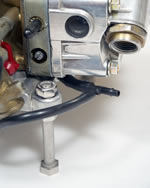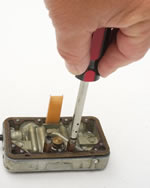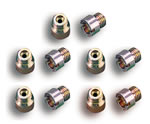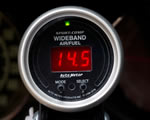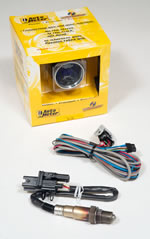Hib Halverson's Big Block From Hell Series
Hib Halverson's Big Block From Hell Series
 |
 |
by Hib Halverson
© December 2012
Information and Tools
From here on, it's DIY, but don't start without an understanding of carburetion theory and function along with in-depth knowledge of Holley 4150 fuel metering systems. If you're a rookie carb tuner, read: Super Tuning and Modifying Holley Carburetors, (PN SA08) from CarTech Books, along with Holley 4150 & 4160 Selection, Tuning and Repair (PN 36-133), Holley Tech (PN 36-27S) and the Holley Performance Catalog (PN L30924), all available from Holley. Information is on the Internet, too. One source is Holley's streaming video site, www.holleytv.com. If you're good with Google, you'll find more. Finally, make friends with a Holley retailer, such as the Carb Shop, because you'll need jets, power valves, accelerator pump cams and shooters, gaskets, a rebuild kit or other parts.
You need some special tools. A Holley Jet Tool (PN 26-68) prevents damage to jets during installation or removal. A vacuum gauge is needed to set idle mixtures and select power valves. Tweezers or forceps are great for handing tiny parts. Very small drills, from #80 (.0135") to #40 (.098"), may be necessary. You can't use a drill motor with these tiny bits, so get a "pin vise", a hand-operated tool for drilling small holes in soft metal.
Accurate measurement of air-fuel ratio (AFR) is required. It's done with an oxygen sensor (O2S) screwed into the exhaust. Inexpensive "rich-lean" indicators, which use narrow-band sensors are inadequate. A modern, wide-band oxygen sensor is required. I installed the Auto Meter "SportComp Wideband Air-Fuel Ratio Monitor" (PN 3378) which I picked because: 1) The Big Block from Hell already had SportComp instrumentation and my experience with it has been good. 2) It uses a Bosch wide-band O2S with a resolution of 0.1 air-fuel ratio and 3) I like its combination of a numeric display (reads AFR or lambda) and a "pseudo-analog" display of colored LEDs. Fine tuning a Double-Pumper's drivability is very difficult without a wide-band O2S like the Auto Meter.
Before you begin, make sure your ignition system is in good condition. If there are problems with ignition, address them before getting into carb tuning. More on ignition is in a sidebar to this article.
Lastly, you'll spend a fair amount of money on road testing. We burned hundreds of bucks worth of fuel in validating our drivability mods. You can, also, do the part-throttle work on a chassis dyno provided it's a "brake dyno" which can allow the car to run at part-throttle at constant speeds. Problem is, that could cost as much or more because dyno time can be pricey. Anyway you cut it, be it parts or testing; good carb tuning ain't cheap.
 |
 |
